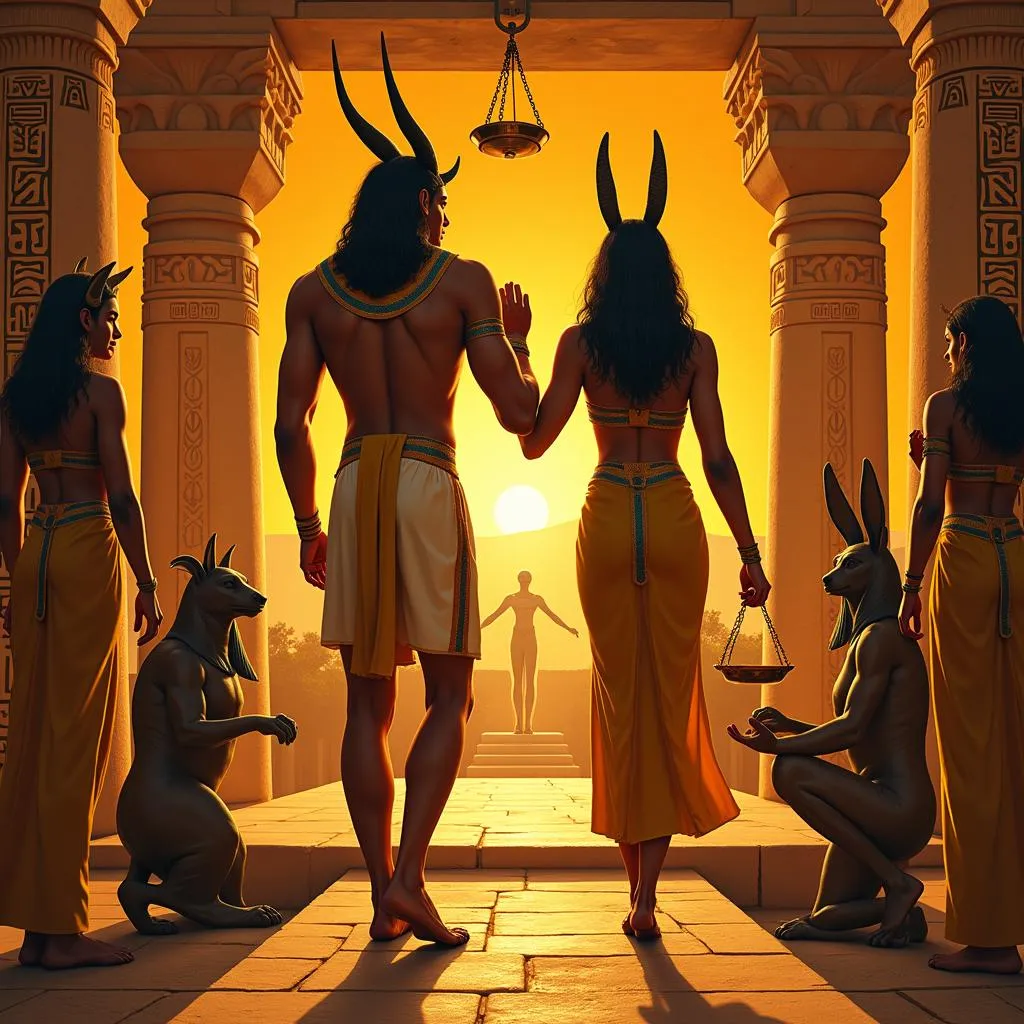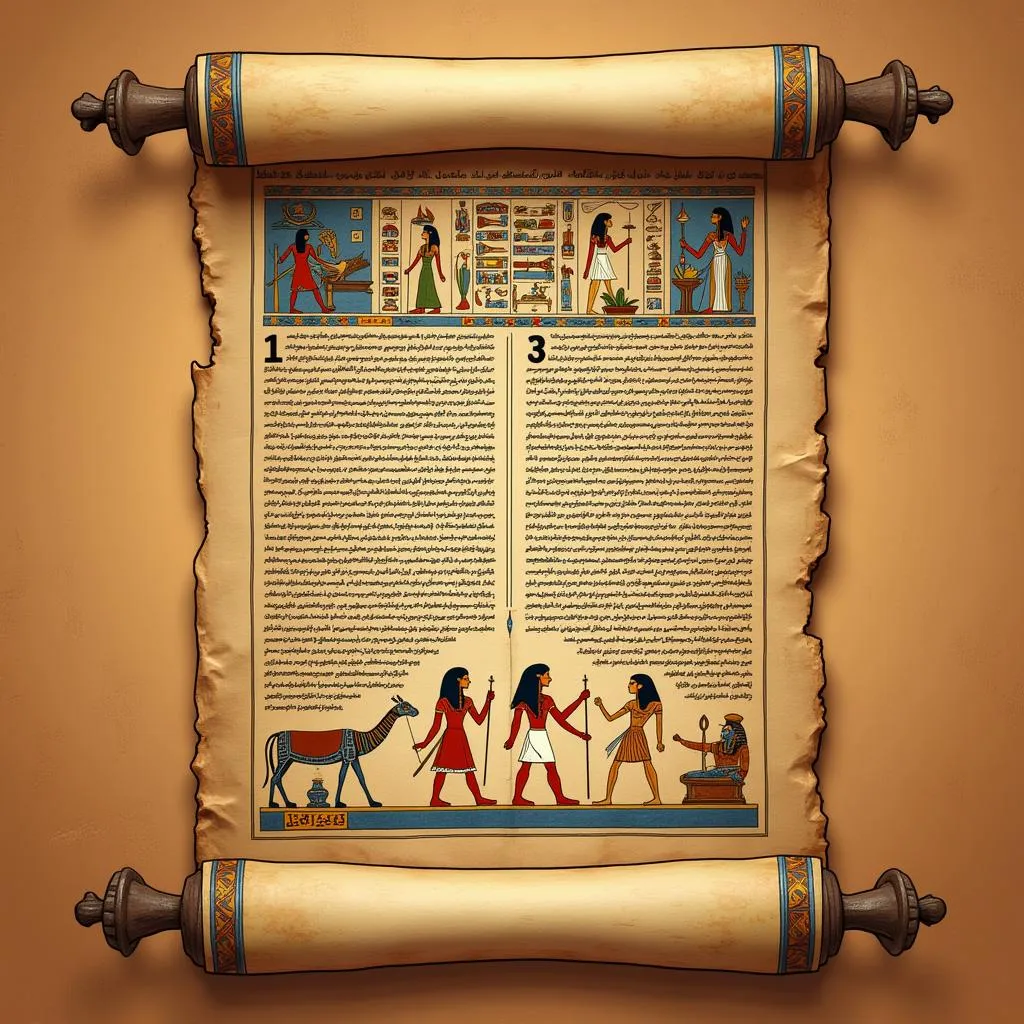The Last Judgment of Hunefer: A Deep Dive into AP Art History
The “Last Judgment of Hunefer” isn’t just a vibrant scene from ancient Egyptian art – it’s a window into their intricate beliefs about the afterlife. Found within the Book of the Dead of Hunefer, a royal scribe during the 19th Dynasty, this powerful imagery guides us through the ancient Egyptian perception of judgment, morality, and the soul’s journey after death.
 The Last Judgment of Hunefer scene from the Book of the Dead
The Last Judgment of Hunefer scene from the Book of the Dead
Decoding the Afterlife: What Does the Last Judgment Depict?
Imagine standing before a divine scale, your heart heavier than a feather, your fate hanging in the balance. This is the essence of the “Last Judgment of Hunefer.” The scene depicts Hunefer, guided by Anubis, the jackal-headed god of embalming, towards a set of scales. One side holds his heart, symbolizing his deeds in life, while the other holds the feather of Ma’at, representing truth and justice. This “weighing of the heart” ceremony determined whether Hunefer was worthy of entering the afterlife.
The Divine Jury: Who are the Key Players?
The “Last Judgment” scene is populated by a cast of powerful deities, each playing a crucial role:
- Osiris: The god of the underworld, presiding over the judgment.
- Anubis: The guide of souls, leading Hunefer to the scales.
- Thoth: The ibis-headed god of wisdom, recording the judgment’s outcome.
- Ammit: A fearsome creature waiting to devour unworthy souls.
 Egyptian gods depicted in the Last Judgment scene
Egyptian gods depicted in the Last Judgment scene
Their presence underlines the gravity of the event – this wasn’t just a trial, but a divine assessment with eternal consequences.
Symbolism and Significance: More than Meets the Eye
The “Last Judgment of Hunefer” is rich in symbolism, revealing deeper layers of ancient Egyptian beliefs:
- The Scales: Represent the balance between good and evil, truth and falsehood.
- The Heart: Symbolizes the conscience and moral compass of the deceased.
- The Feather of Ma’at: Represents the divine order and cosmic harmony.
Through these symbols, the Egyptians expressed their belief in a just and balanced universe where actions had consequences.
The Book of the Dead: A Guidebook for the Afterlife
This iconic scene isn’t an isolated artwork – it’s part of Hunefer’s personal “Book of the Dead.” These illustrated papyrus scrolls were placed in tombs to guide the deceased through the afterlife’s perils and help them navigate the underworld’s trials.
 A Book of the Dead papyrus scroll
A Book of the Dead papyrus scroll
AP Art History Context: Connecting the Dots
The “Last Judgment of Hunefer” holds significant weight in AP Art History. It exemplifies:
- Ancient Egyptian artistic conventions: Including the use of hieroglyphs, profile views, and the hierarchical scale of figures.
- Religious beliefs and funerary practices: Providing valuable insights into their complex understanding of the afterlife.
Analyzing this artwork requires delving into its historical context, symbolism, and artistic techniques.
Conclusion: A Timeless Tale of Morality and the Afterlife
The “Last Judgment of Hunefer” transcends its ancient origins. It speaks to the human fascination with death, judgment, and the eternal quest for a virtuous life. By studying this captivating artwork, we gain a deeper appreciation for the rich tapestry of human belief and the enduring power of art to connect us across time and cultures.
Need assistance? Contact us: Phone: +84 24 6257 3573, Email: danteum@gmail.com or visit us at Savico Megamall, 7-9 Đ. Nguyễn Văn Linh, Gia Thụy, Long Biên, Hà Nội 10000, Việt Nam. We have a 24/7 customer support team.



